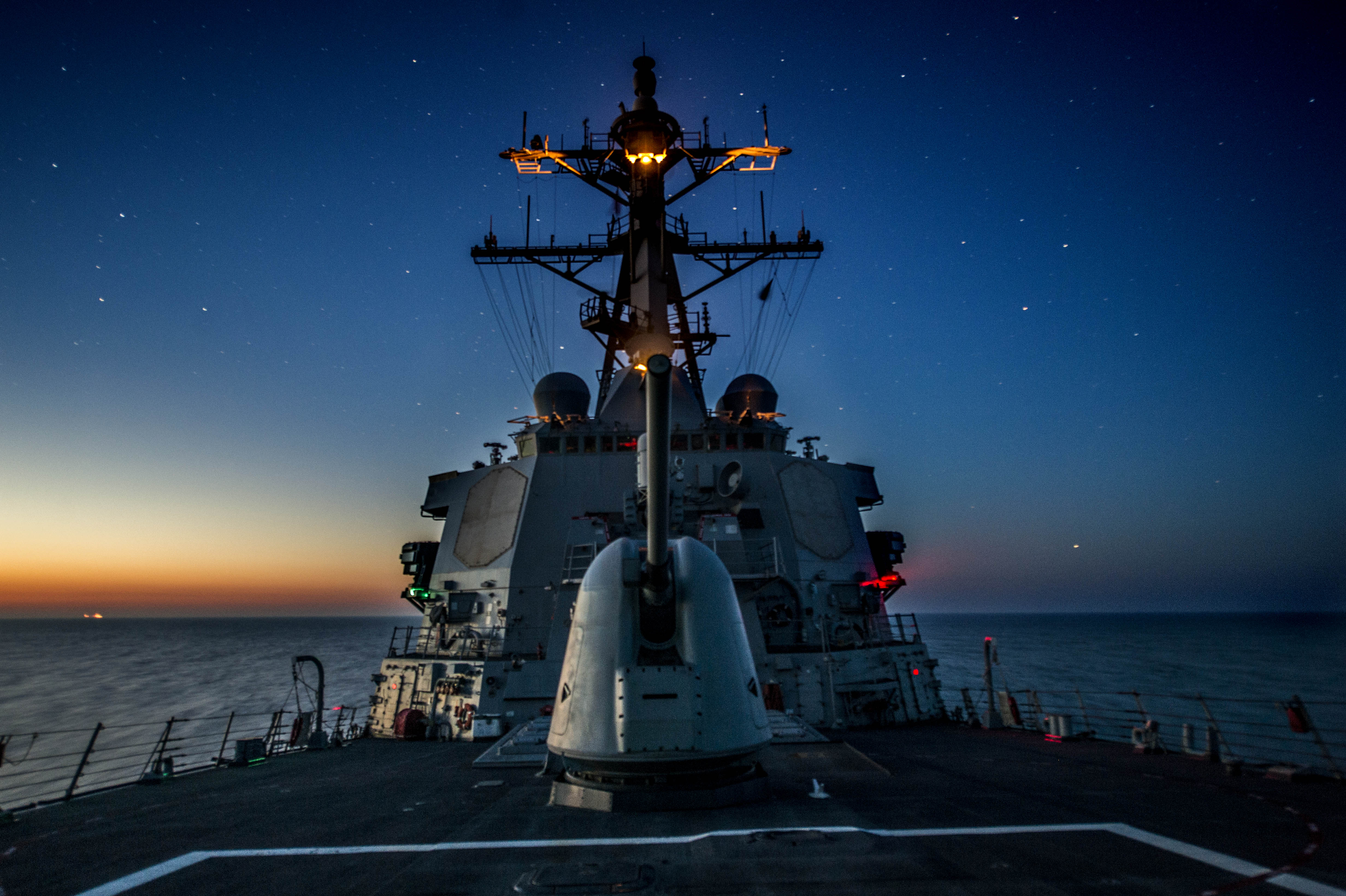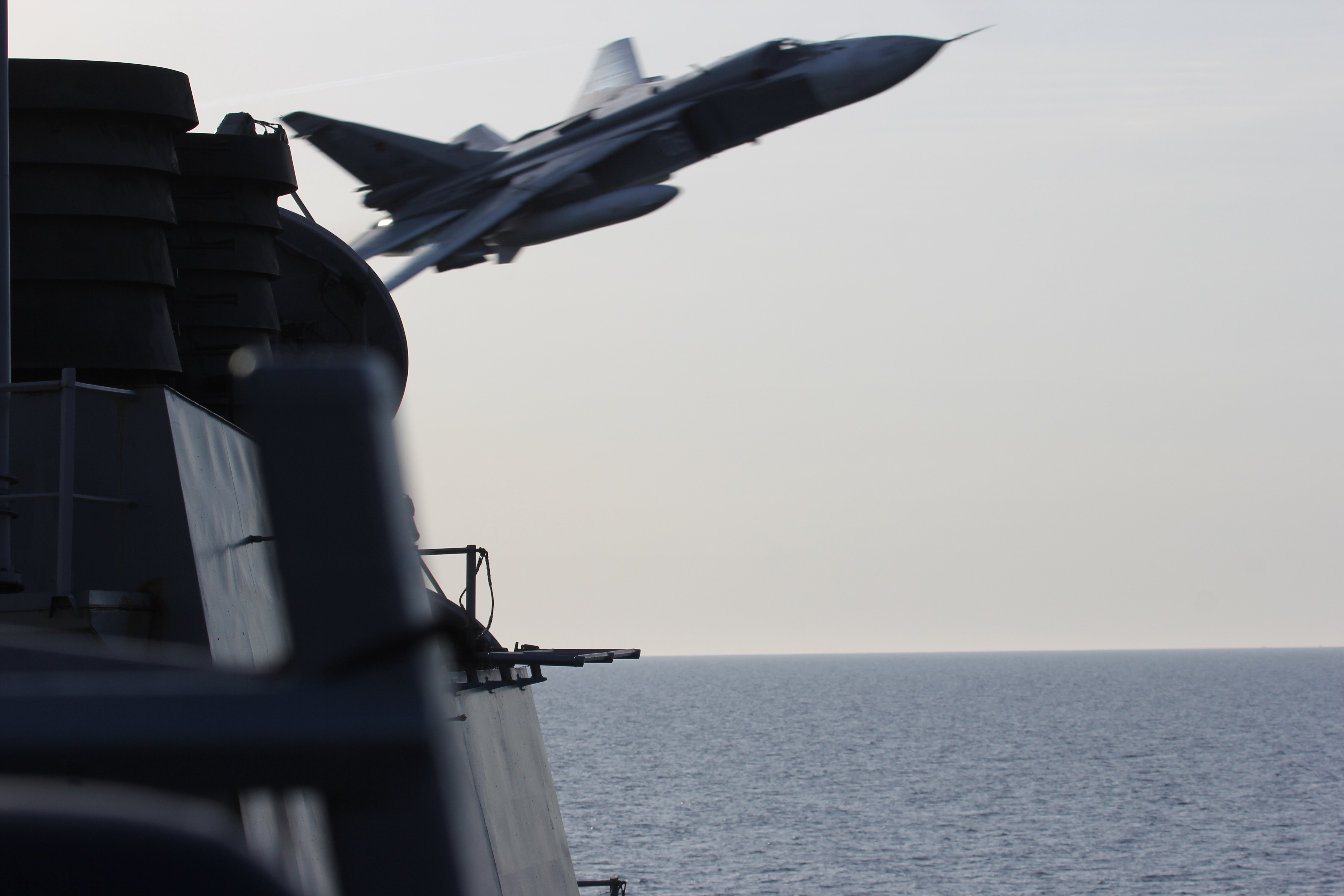
Five years into basing four guided-missile destroyers in Spain as part of a larger European ballistic missile defense scheme, the Navy announced it will start to cycle out the warships for more modernized hulls..
The quartet will start to rotate next year with all four ships – USS Donald Cook (DDG-75), USS Ross (DDG-71), USS Porter (DDG-78) and USS Carney (DDG-64) – set to cycle out of Naval Station Rota by 2022.
They will be replaced, “with newer, modernized ships in order to posture the most capable forces forward in the U.S. European Command area of responsibility,” read the statement from 6th Fleet. “Additionally, the U.S. Navy intends to relocate a helicopter maritime strike squadron (HSM) to Rota in support of the destroyers, which will enhance the multi-mission roles of these ships.”
A Navy spokesman did not provide additional details on the ships or the helicopter squadron when contacted by USNI News on Tuesday.
While the service is light on details about which ships will forward deploy to Rota, it’s likely the Navy will send destroyers modified with the Baseline 9 of the Aegis Combat System.
Baseline 9 allows U.S. destroyers to simultaneously patrol for ballistic missile defense threats as well as identify and target traditional air warfare threats like cruise missiles and aircraft.
The current destroyers are capable of ballistic missile defense missions but are equipped with an older software and hardware combination.
While the ships have an older configuration of combat systems, the four in Rota have been modified to include additional self-defense capabilities like adding Raytheon’s Sea Rolling Airframe Missile (SeaRAM) and versions of Surface Electronic Warfare Improvement Program (SEWIP) electronic warfare suite.
The quartet of destroyers have been among the busiest in the fleet and involved in some of the most high-profile operations in the region.
The deployment of the destroyers to Rota was part of the Obama administration’s phased adaptive approach to ballistic missile defense. The BMD patrols from the Rota would be eventually paired with two Aegis Ashore installations in Poland and Romania designed to take on threats from a rogue ballistic missile.
The ships began patrolling from Rota in 2014, shortly after Russia invaded and seized Crimea from Ukraine.
On its first patrol, Cook was famously buzzed for 90 minutes by Sukhoi Su-24 while operating in the Black Sea. In 2016, Cook was again buzzed in the Baltic by Russian fighters during a separate patrol.
In 2017, Porter and Ross fired almost 60 Tomahawk Land Attack Missiles into Syria in retaliation for a chemical weapons strike against forces loyal to Bashar al Assad.

The following is the complete statement from U.S. 6th Fleet.
The U.S. Navy plans to rotate the four currently Forward Deployed Naval Force-Europe (FDNF-E) ships with newer, modernized ships in order to posture the most capable forces forward in the U.S. European Command (EUCOM) area of responsibility (AOR). Additionally, the U.S. Navy intends to relocate a helicopter maritime strike squadron (HSM) to Rota, Spain, in support of the destroyers, which will enhance the multi-mission roles of these ships.
Continuing to operate the FDNF-E destroyers out of Rota, Spain demonstrates the enduring relationship between the U.S. Navy and our Spanish naval allies. Additionally, the U.S. and Spanish navies will continue working together to conduct ship maintenance, training, and operations in support of maritime security within the EUCOM AOR.
The rotation of these ships will be staggered, with the first rotation scheduled to begin in 2020. During this rotation, FDNF-E ships will continue to conduct their assigned missions in the U.S. 6th Fleet area of operations. The transition is expected to be complete by Spring 2022.





